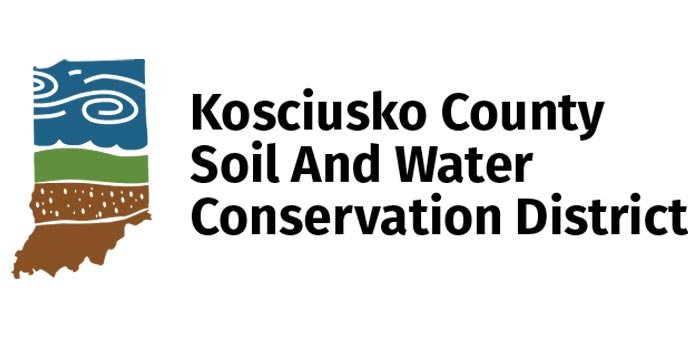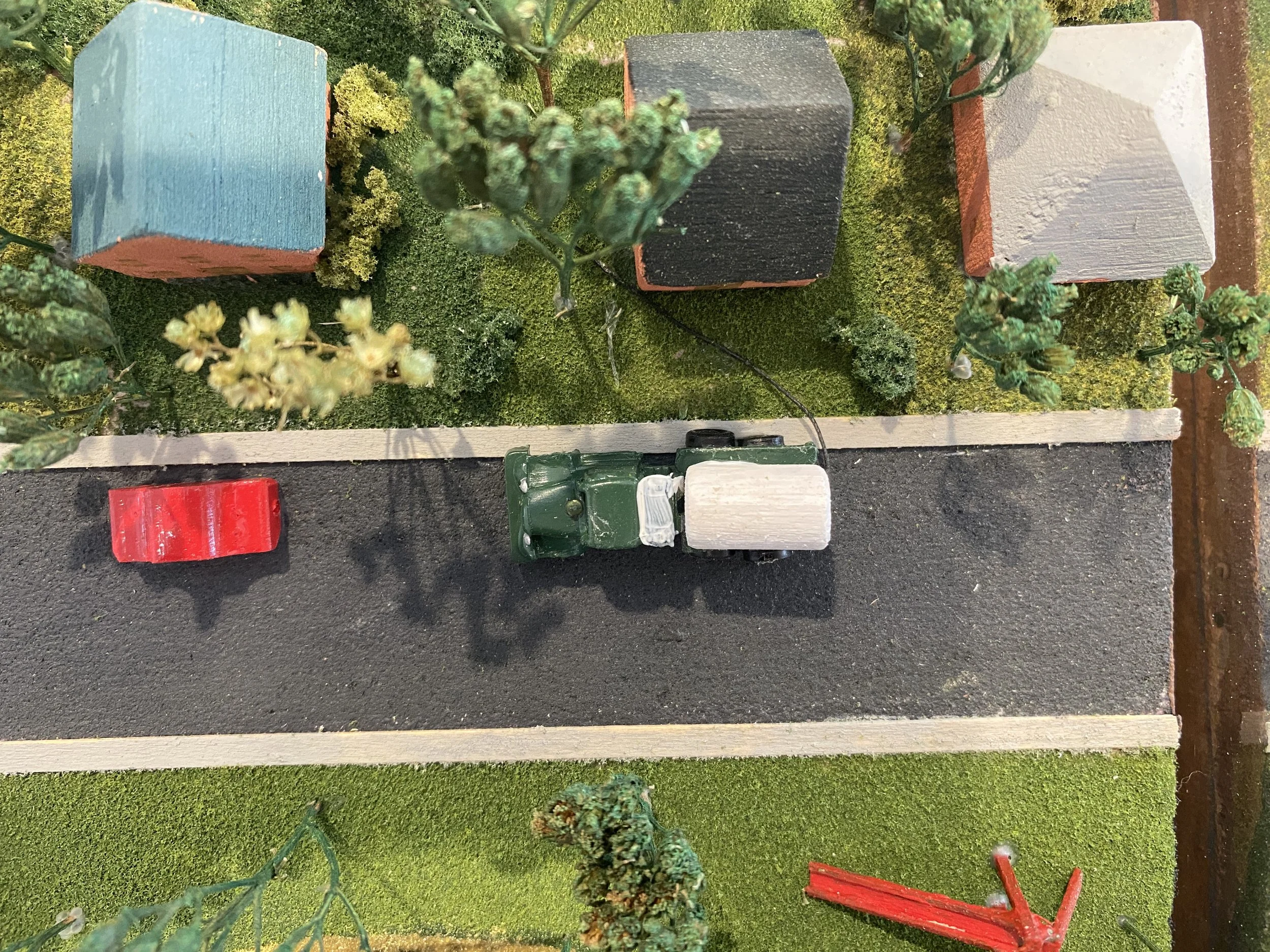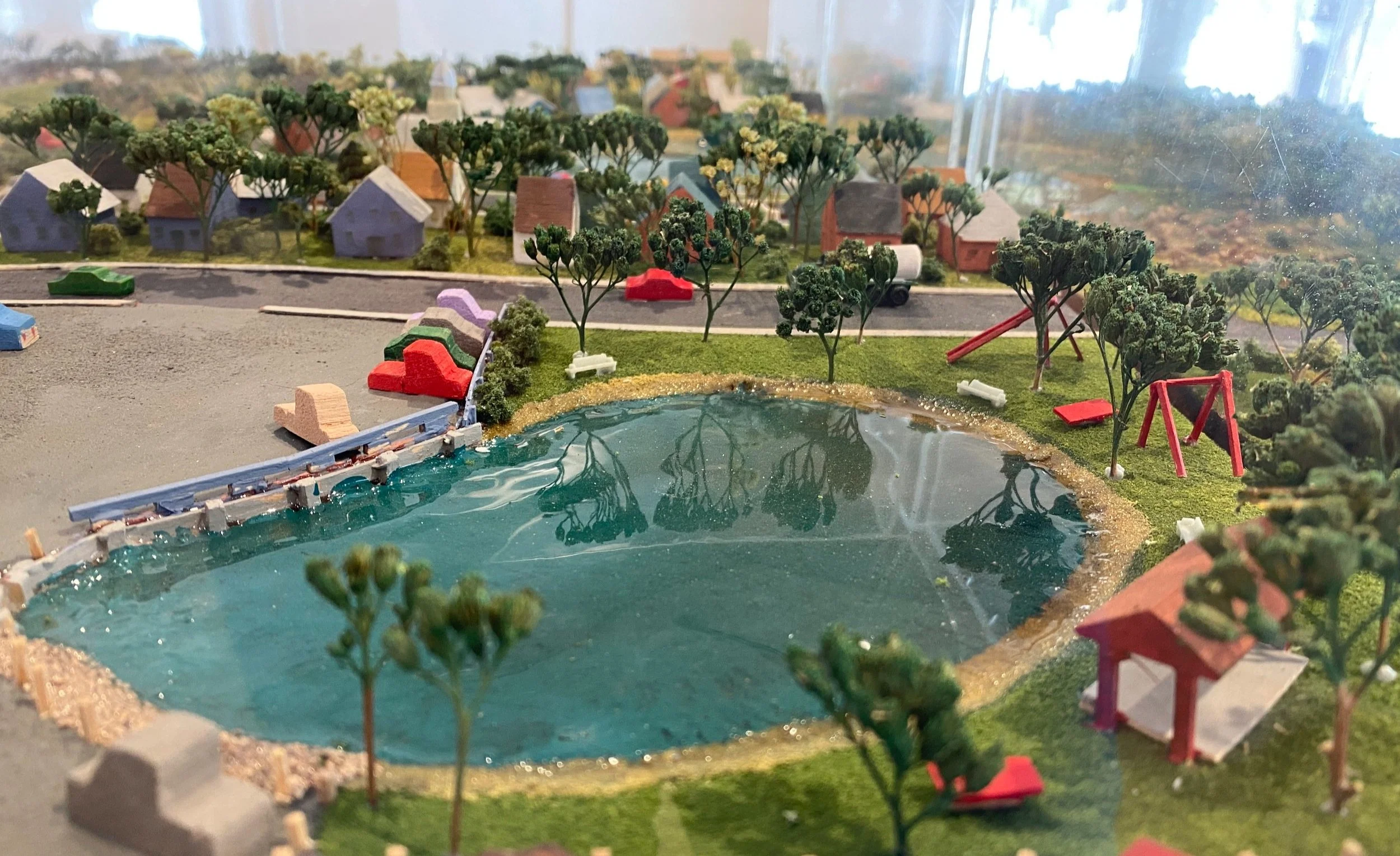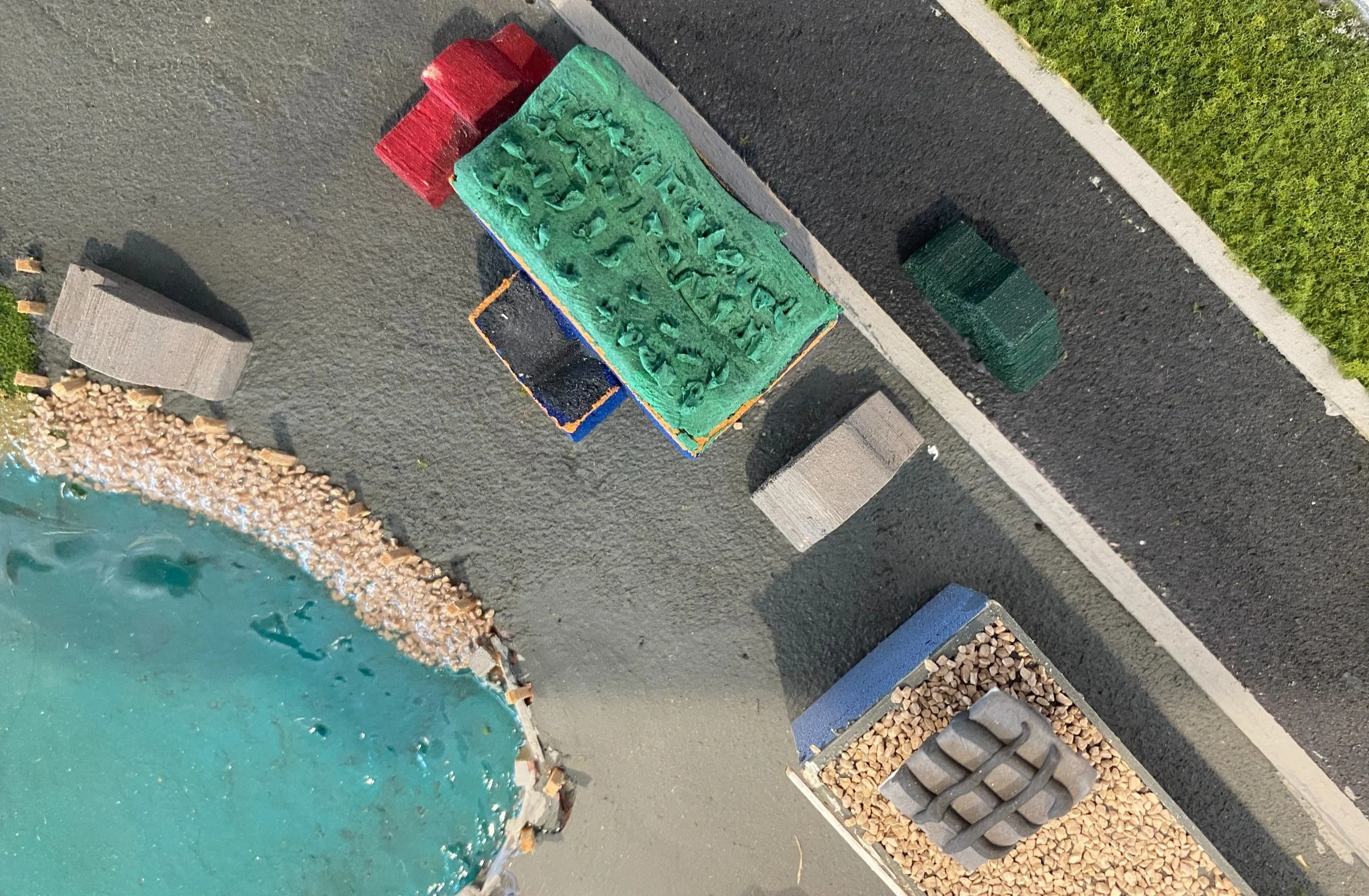Neighborhood
The white house at the end of the street has a green rain barrel. Rain barrels collect rain from gutter downspouts. This rainwater can then be used for gardening. Rain barrels reduce runoff and flooding around homes. They are a great option for conserving water which can be used for free to water your lawn, garden, or house plants.
This neighborhood has many trees. Planting trees in the right places conserves energy and reduced your energy bills by providing summer shade and winter windbreaks. Trees improve air quality by filtering pollutants from the air. Trees reduce runoff of pollutants in the watershed by helping to absorb rainwater and filter out pollutants. Trees even improve human mental and physical health. The Soil and Water Conservation District has an annual tree sale to provide a low-cost source of trees to members of the community.
On the street there is a truck with a white tank. This is a lawn service vehicle applying chemicals such as fertilizers or pesticides. Any chemicals which are not taken up by the grass or do not break down into harmless substances will become pollutants in surface and groundwater. Household pesticide and fertilizer users should always follow all requirements on product labels, dispose of chemicals properly, and only use chemicals when absolutely necessary in order to minimize potential harm to water, wildlife, and people.
Learn more about rain barrels from the Indiana Department of Environmental Management (IDEM).
Learn more about planting trees from the United States Forest Service (USFS).
Kettle Lake
The lake in this neighborhood is a kettle lake that was formed with the retreat of a glacier thousands of years ago. As the glacier retreated large chunks of ice broke off the glacier and were buried under sand and gravel washing out of the melting glacier. As the ice chunk melted, a depression formed and was filled with water. Kettle lakes do not have inflow or outflow.
What will happen to all the oil, salt, and automotive chemicals from the parking lots? This kettle lake doesn’t have an outflow, so any pollutants that run off the watershed and into the lake will be concentrated here.
Shopping Center
The roof of the shopping center has a solar panel. Solar panels convert sunlight into electricity. Sunlight is a renewable source of energy. Renewable energy sources provide alternatives to nonrenewable sources like fossil fuels, and in turn can help to reduce greenhouse gas emissions that negatively impact human health and contribute to climate change. Solar panels placed in areas of existing infrastructure reduce some of the negative environmental impacts of solar such as land conversion. Leaks from solar panel components can pollute the soil and water, so proper maintenance is imperative to protecting the health of our water.
The blue building next to the shopping center has a green roof. A green (planted) roof can absorb heat from the sun, lowering roof and surrounding air temperatures. Green roofs also help improve water quality by absorbing rainwater rather than allowing it to run off the roof.
Learn more about green roofs from the Environmental Protection Agency (EPA).




